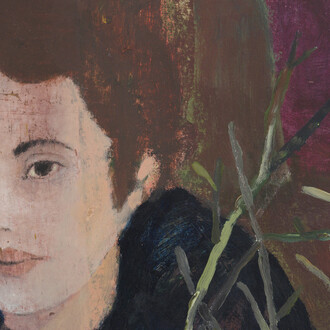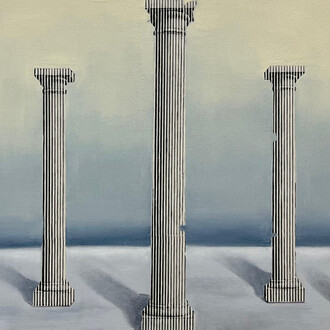From October 15, 2024 to March 30, 2025, the Musée des Arts Décoratifs takes you on a fascinating journey into the heart of our inner sanctum through a history of privacy, from the 18th century to the present day. 470 works, including paintings and photographs, as well as decorative art objects, reveal how the private sphere has evolved.
From the bedroom as seen by Henri Cartier-Bresson or Nan Goldin and 19th-century wrought-iron beds to the “lit-clos” of the Bouroullec brothers’, from the commode chair to the urinal for women, from waterless hygiene products to the bathroom, from aristocratic beauty to mass consumption, from licentious books to sex toys, from the Walkman to social networks and influence, through the tools of surveillance and protection, the exhibition shows how privacy came to be, and the profound changes it has undergone since then.
The increasingly blurred and porous boundaries between private and public have sparked much debates. The chief curator is Christine Macel, Director of the Musée des Arts Décoratifs. along with curator Fulvio Irace, design and architecture historian. The scenography is designed by Italian architect Italo Rota.
Through twelve themes, the exhibition, presented in the nave of the museum and the side galleries, opens through a gigantic keyhole. In an intimate setting, five themes are explored in the garden‑side gallery: women and privacy, the bedroom, places of convenience, hygiene and beauty, and perfume.
Women and privacy
In the 19th century, with the emergence of a middle class, professional and family life grew separate, with women in charge of the household and the private sphere. Painters – most men, such as Edouard Vuillard, who opens the exhibition – often depicted them in their homes. It was only gradually, thanks to feminist revolutions, that the “feminine mystique” described in Betty Friedan’s book began to dissociate itself from the enclosed space.
Places of convenience
Objects from the 18th century such as the Bourdaloue, a portable chamber pot used by women to urinate in public, commode chairs and bidets are compared with recent urinals and toilets, such as Toto’s latest model. The modern invention of hygiene and privacy has transformed these so-called “places of convenience”, which became taboo in the 19th century, something that 20th-century artists such as Judy Chicago and Sarah Lucas play on in their work.
A room of one’s own
The word “bedroom” first appeared in the 18th century. A large library of books on the bedroom is presented, from Marcel Proust to Michelle Perrot. From Ramon Casas to Martine Locatelli, new representations emerge, from the afternoon nap to the teenager’s bedroom. In Georges Pérec’s The man who sleeps, the bed becomes a living space, while for the writer Colette and artist Ben it is a place to work or create. Today, we all want a “bed of our own”.
Bathing
For a long time, water was associated with miasmas, before the advent of modern hygiene research. The room brings together old pitchers and dressing tables, the 19th-century bathtub, depicted by Edgar Degas and Alfred Stevens, and the ceramic bathtub, with the appearance of the bathroom, that became commonplace in the 1950s. Yesterday’s luxury has become today’s ordinary.
Intimate beauty and fragrance
The construction of appearance takes place mostly away from the scrutiny of the outside world. Some of the items associated with it have changed or even disappeared according to fashions, revealing sociological turning points. Powder compacts, mirrors and lipsticks all reflect the uniformity of women’s appearance until the 1960s.
Recent times have paved the way for greater diversity, inclusiveness and gender fluidity. Fragrance is revealed either in very close physical proximity, or through a more readily shared “trail”. Consequently, both say a great deal about the kind of relationship we wish to establish with others, from smelling good to sensual invitation. From eau de Cologne to Yves Saint Laurent’s fragrance Opium to Caron’s Tabac blond, perfume, and its bottle, reveal a great deal about us.
Promiscuity and isolation
The exhibition continues in the nave with spectacular scenography focusing on twenty-five masterpieces of 20th-century design, around the theme of the nest and shared intimacy. Design from the 1950s to the present day, through seats, sofas and beds, illustrates a constant dialectic between thea desire for isolation and a chosen promiscuity.
Pieces such as Eero Saarinen’s Womb Chair testify to the protective withdrawal of the 1950s and 1960s, while designs by Superstudio, Archizoom and Memphis reflect the desire for togetherness typical of the 1960s and 1970s.
The exhibition continues at the back of the nave and in the rue de Rivoli side galleries, covering six themes that explore the most contemporary changes, from sexuality to social networks, through content creation and surveillance techniques. It also examines the question of privacy in times of insecurity, and ends with a room dedicated to that most precious form of privacy: the diary as a conversation with the self. Finally, a piece by Thomas Hirschhorn, quoting the philosopher Simone Weil, invites us to reflect on the possibilities of social networks and consider a new humanism.
Intimacy and sexuality
From Fragonard’s The lock to the licentious books of the 18th century, works of art reveal the male gaze. At the time, homosexuality was rarely portrayed and was judged negatively. In the 20th century, representations of all forms of sexuality came to the fore, from David Hockney to Nan Goldin or Zanele Muholi. New objects, such as vibrators and sex toys designed by everyone from Matali Crasset to Tom Dixon, becmae increasingly popular and are presented in a large showcase at the back of the nave.
The connected bedroom
New technologies have done much to change the way we define and experience privacy. The Sony Walkman from the late 1970s, the pink Minitel from the 1980s, and mobile phones that appeared in the 1990s are all on display, as is reality TV with Loft story, from the early 2000s, and Hella Jongerius’s connected bed, which reflects the new connected bedroom.
From social networks to influence
Back in 1947, a film by the director J.K Raymond Millet imagined the birth of a multi-screen world with startling prescience.
Content creators showcase their Instagram accounts as their own concept of intimacy, from Lena Situations to Sophie Fontanel, while Evan Baden’s photographs alert us to the danger of self-exposure.
Surveillance and protection
New technologies of surveillance and protection have led to profound changes in our relationship with intimacy and our private lives, whether in the public or private sphere. This room features surveillance cameras, geolocation and tracking technologies, facial recognition objects, drones and connected objects, sources of both opportunities and risks.
Precarious privacy
What is left of our privacy, and how can we protect it when we find ourselves in a precarious situation, deprived of a space of our own, be it through homelessness, as a migrant, as a prisoner or as a patient?
Kosuke Tsumura’s survival design answers this question. When shelter is scarce, the public bench and makeshift blanket help to recreate the nest we need for sleep, as Matthieu Pernod reveals.
The ultimate privacy
Beyond the private sphere, privacy consists of what we keep within ourselves, our thoughts, dreams and imagination.
This is the ultimate privacy and cannot be taken away. The very idea of a conversation with the self reached its peak in the 19th century with the practice of journaling, which endures in other forms such as the blog, as illustrated by a selection of newspapers from the 19th century to the present day.
















